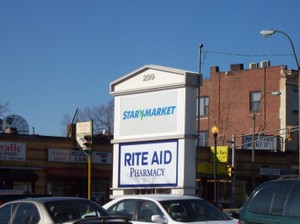Lauren C. Ostberg Five changes to Somerville's zoning ordinance were discussed and refined by the Committee on Land Use on Tuesday, February 9, and passed at the following Board of Aldermen meeting. They are intended to encourage development in East Somerville and Winter Hill, particularly at the site of the former Star Market. "Winter Hill needs a boost," said Monica Lamboy, Executive Director of the Office of Strategic Planning and Community Development (OSPCD), who presented these modifications for review. |
||||
These modifications incorporated recommendations from the Mayor's staff, the OSPCD, and discussions from public meetings as far back as November 2008.
Given the length of the process, Lamboy and Land Committee Chair Sean O'Donovan encouraged the group to move on the changes.
"The pulse of the neighborhood is telling me, get something good at the Star Market," said Ward 4 Alderman Walter Pero.
However, any change in zoning ordinances affect all existing Somerville establishments.
"This zoning is not just zoning for this area. My ward is probably the most vulnerable," said Ward 2 Alderman Maryann Heuston, who wanted to be sure that the proposed changes would not adversely affect the recently-rezoned Union Square area.
She also expressed concerns about parking. Retail businesses are required to have one space per 800 NSF in CCDs. Heuston encourages realistic traffic estimates and requirements to aesthetically space and concealing parking, so as to avoid Demoulas overflow or eyesore-empty lots.
The proposed modifications include the identification of a new Corridor Commercial District 45 (CCD 45), the creation of small pockets of residential areas, the reduction of Floor Area Ratio (FAR) limits in shallow lots, and a refined CCD purpose statement that emphasizes the need for neighborhood-serving uses in multi-tenant buildings. Properties between Grant and Wheatland Streets, between Kensington and Garfield, and in the Walnut/Broadway area, were remapped as "Residence C" to further separate them from the commercial district.
The reduced FAR limits, according to Lamboy, are meant to discourage developers from overbuilding on shallow lots. CCD's 45-foot height limit, 10 feet shorter than that of the existing CCD 55, was also proposed to maintain a proportionate, neighborhood feel along Broadway.
Most discussed was the creation of a "large retail" use cluster, which would require special permits and site review for all retail/service establishments of over 10,000 NSF.
Heuston expressed concern over potentially "onerous uses," which Lamboy assured her could be eliminated in the special permit process.
Lamboy stressed that the special permit requirement prevented these large, potentially neighborhood-impacting structures from going forward fait accompli, without the possibility of community review.
The Board of Aldermen approved the modifications with a 10-0 vote.
"It's a package compromise," said Alderman at Large William White. "Am I happy with all of the parcels? No. But it addresses the concerns of Planning, the Ward Aldermen, and the residents who spoke at public hearings."
Pero expects that the ordinance will go through some minor revisions in the coming weeks, and Heuston aims to amend the parking requirements.
















Reader Comments